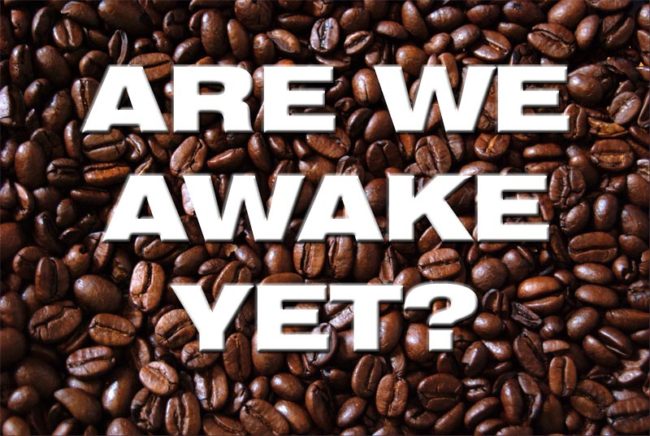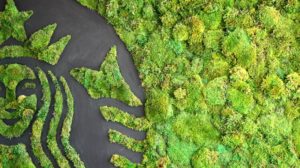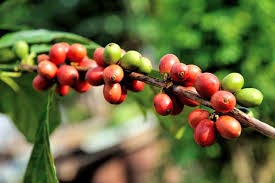
Are We Awake Yet?
Making the decision to purchase only “eco-friendly” products is a worthwhile goal for all of us who care about conservation of the Earth’s ecosystem. In order to make intelligent buying choices, we need to be well informed. This is where the challenge lies. How do we know that package labeling is truthful? By what means can we find out whether a company’s environmental claims are valid?
First important decision of the day
 We love our coffee in the mornings. For many of us it is what gets us going which attests to the common response when asked for something that requires mental activity: “I haven’t had my coffee yet”. So, you can imagine the extra jolt I got from the following Conservation International (CI) headline of the press release. The headline reads, “Future Demand and Climate Change Could Make Coffee a Driver of Deforestation”.
We love our coffee in the mornings. For many of us it is what gets us going which attests to the common response when asked for something that requires mental activity: “I haven’t had my coffee yet”. So, you can imagine the extra jolt I got from the following Conservation International (CI) headline of the press release. The headline reads, “Future Demand and Climate Change Could Make Coffee a Driver of Deforestation”.
The article is a summary of their 2016 study on the coffee supply for the 21st century. I almost spilled my now guilt-filled cup of obviously “You-Just-Destroyed-The-Rainforest” brand coffee when I opened the link Trudy forwarded to me one morning. “I think you will want to read this one” she said, as we both now looked a bit differently at the cups in our hands.
You may be feeling the urge to stop reading at this point. But please don’t do that. We promise not to ask you to cut back on, or stop drinking, coffee to save the rain forests. A year ago we might have considered such an idea. But it has become vividly clear that if we are to protect the tropical habitats for orchid species, we all need to wake up to the factors impeding our efforts.
Factor #1: Greenwashing
We all know what “white-washing” means, right? Green-washing works exactly the same way, except its purpose is related to ecology. It can lead us to believe a certain product is “eco-friendly”. But more insidious than that, it can cause us to lose focus of the bigger picture – the forces which absolutely guarantee deforestation and habitat destruction. More on the bigger picture in a moment

Photo from Starbucks’ website – the company’s sustainability statement.
The publisher of the above article on coffee, Conservation International (CI), is a well-respected U.S. based environmental advocate. In the course of a 15-year long relationship CI and Starbucks together have developed a program called Coffee And Farmers Equity, or simply C.A.F.E. On the surface, this is an outstanding program and one that CI and Starbucks are very proud of, as they should be. Equitable treatment of workers in the coffee industry, as well as all other industries, is important.
Seeing the name of this program, C.A.F.E., we would assume that the goal of CI and Starbucks program is to protect the environment, specifically the vanishing rainforests where coffee is grown. Here is where green-washing comes into the picture. In reality, the only goal of the C.A.F.E. program is to make the coffee supply sustainable. Sustainability is supposedly achieved, at least in part, by strategic social programs and by supplying millions of coffee tree seedlings to coffee farmers,  committing them to their role as more productive sources in Starbucks’ supply line for the future. Any company in our economic system today would have to protect their supply line, and these programs do just that in a manner which appears to be altruistic.
committing them to their role as more productive sources in Starbucks’ supply line for the future. Any company in our economic system today would have to protect their supply line, and these programs do just that in a manner which appears to be altruistic.
Green-washing does not necessarily equate to dishonesty. Starbucks is a popular, reputable company, which doesn’t need to make any verifiably incorrect statements, or violate any laws. They haven’t done that, they wouldn’t do it, and they don’t have to. All they need to do is advertise or print on their bags “99% equitably sourced coffee”, with CI endorsement. We, John Q. Public instinctively know they are the “good guys”. We are expected to believe that Starbucks is no threat to our environment because it tells us so, right there on the bag.
Factor #2: Messaging
Harder to discern than greenwashing is the concept of “messaging”. The frightening title of the CI article immediately gives us a misleading message. We are led to believe that the effects of “future demand” and “climate change” carry equal weight in the coffee industry’s having to encroach on our protected orchid habitats in Central America, the Andes, and Asia. True, it is important to properly understand both future demand and climate change, and it looks like the CI study (read the full report) is right on the case. Indeed, in their study report itself, both factors are examined closely and the impact of each is well covered.
However, the introductory message of the CI article about their study a quickly makes sure the attention is placed on Climate Change:
The title (of the study), “Coffee in the Twenty First Century: Will Climate Change and Increased Demand Lead to New Deforestation,” examines dimensions of future supply and demand for coffee in the context of how climate change might impact geography of coffee production. It concludes, climate change could trigger a new round of deforestation if coffee producers are unable to increase productivity on existing coffee farms.

Cool growing Dracula lotax orchid
If the coffee industry happens to ever come under fire for encroaching on areas of high species concentration and protected orchid habitats, for example, the Dracula Reserve in Ecuador, or anywhere else, we are meant to understand that climate change is to blame. This is an example of effective use of “messaging”. By keeping the focus on climate change (rather than on all the advertising that drives up demand), the coffee industry insulates itself from public criticism, because climate change is a factor over which the industry has no control.
What this introductory paragraph quoted above fails to say is that “in the context of demand”, the study shows that increasing demand has a greater impact on the ability to keep up a “sustainable” supply than does climate change. In fact, the demand projections overshadow the effects of climate change by orders of magnitude. And the report itself even minimized the effect of climate change. Yet the very carefully crafted opening statement of the article has already planted into the mind of the reader that in the end climate change will receive the blame for the deforestation that will inevitably occur.
It is important to note that the CI study (Walmart funded, by the way) did not mention any company names. But it just so happens that Starbucks is the world’s largest customer for coffee growers, both for cool-growing Arabica beans as well as for warmer-growing Robusta varieties in all 70 countries which produce coffee.
It is interesting to note that the demand graphs in the CI study show that the major demand increase for coffee exactly mirrors the Starbucks’ growth strategy of converting tea consumers in Asia and around the world to become coffee drinkers. Furthermore, the study reveals that major new customer markets grow fastest in countries where new coffee production is occurring. According to the charts, the major growth in demand will be coming from countries which are currently low consumers of coffee. This appears to link to the joint effort of CI and Starbucks to expand C.A.F.E programs alluded to by Peter Seligmann, founder and CEO of Conservation International, when he states ” …but we need to keep pushing these techniques to global scale”. “Global” means, of course, expanding into new markets.
The global conundrum in which we find ourselves is that we have an economic system that requires continued growth on a planet with finite resources.The signs are all around us that our current way of doing things is not sustainable. Before long we inevitably will hit a wall. Unless we seriously commit to big changes both humans and all of nature are in grave peril.
Or, we could simply roll over and go back to sleep. The choice is ours.![]()